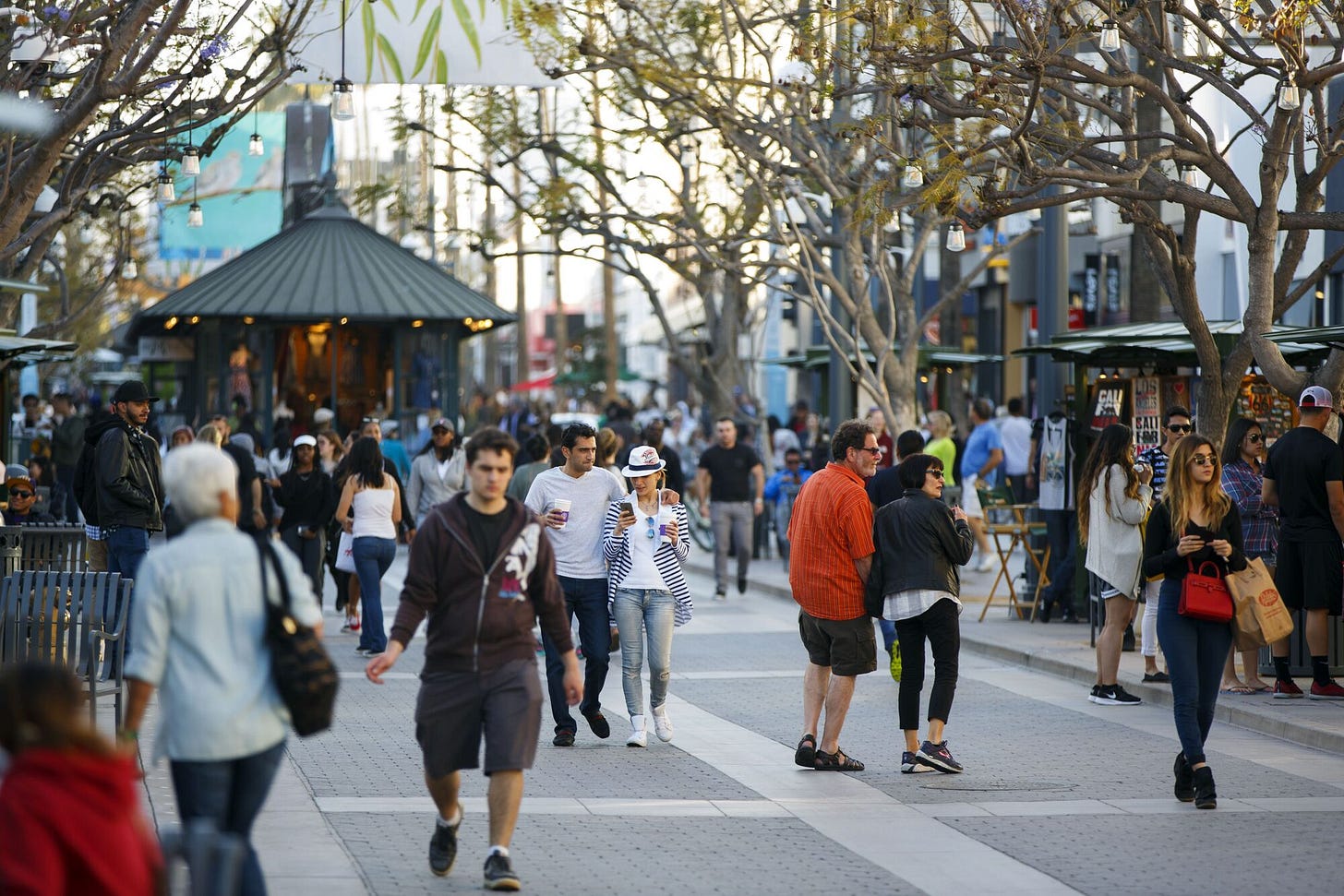Thanks for reading The New Urban Order — where urbanists discuss the future of cities. Later this month, I’ll celebrate a whole year of writing this Substack. If you’ve been reading the New Urban Order for a while and find this work valuable, please do upgrade to a paid subscription. It’s only possible with reader support. ❤️ Also, I’m going to launch the book club later this month — please take a moment to vote on the book we should read!
During the pandemic, when I was rethinking everything, including whether I wanted to keep living in Philadelphia, I tried to find reasonably priced, walkable neighborhoods in other cities where I might consider moving. I ended up pretty frustrated that tools like Walkscore generalized walkability but didn’t account for the amenities that mattered most to me, like a nearby public school. When I saw Close, “an interactive travel time map for people who want to be near the amenities that matter most to them” by Nat Henry of Henry Spatial Analysis, I could quickly imagine an array of uses for it. Yes, it could help someone figure out where to move, but it also could help local government understand the inequities in their city by showing which neighborhoods lack daily amenities. Below is an interview with Henry about this project. You can connect with him over email, LinkedIn, or Twitter.
What prompted you to create Close?
I started building the precursor to Close in early 2023. I live in a dense, walkable part of Seattle, and exploring my neighborhood on foot was a cornerstone of my daily routine and a lifeline during the pandemic. I wanted to know where else in Seattle I could get around primarily by walking—for me, that meant having all my daily needs within a convenient distance.
I’m a geographer by trade, so I started noodling around with isochrone maps, and I ended up creating a walkability map for Seattle that I posted on my personal blog. For anyone who’s tried Close, that early walkability map is based on the same fundamental idea: you select the destination types that matter most to you, and the map shows the walking time to the furthest of your selected destination types across every block in Seattle. As you add more amenities, the blue-green region where everything is accessible within 15 minutes starts to shrink, and you end up with your own personalized pockets of walkability.
The reaction to that first Seattle map was overwhelming: it went viral on Twitter, Reddit, and Hacker News, and ended up on the front page of The Seattle Times. Months later, I was still hearing how people had used the map to choose their next home, or how it had been referenced in a policy debate. It seemed to me like the demand for walkability extended far beyond Seattle, so in June 2023 I took a leap and started my own company to build tools like Close.
For the layperson, what kinds of data sets do you use in the program?
I’m combining several free and open-source spatial datasets to build the destinations roster for Close. My primary source for most private businesses is Overture Maps, a newly released global database that updates monthly.
I’m also incorporating user feedback into the map: any user can report missing destinations through the side menu, or incorrect destinations by following the “⚠️” link in that destination’s pop-up. I’ve incorporated over 500 user reports so far, and every report also informs my process for vetting the other 3.7 million (and growing) destinations on the map!
There are a lot of other attempts to quantify vibrancy and walkability in city life. Walkscore, for example. How does Close improve upon those other programs?
I want Close to occupy a different niche from existing tools by being transparent, easy to interpret, and responsive to feedback. When you explore Close in your city, you can immediately compare it to your own experience walking around each neighborhood. If there are discrepancies, you can report the issues and they’ll be fixed in a matter of days! Customizability also matters: a childless young adult probably cares about different destinations than parents of toddlers.
Close’s “time to furthest important destination” approach will sometimes give different answers than a composite metric. For example, Walk Score ranked Seattle as the ninth most walkable city in America, with a score of 74.4; but I found that only 44% of Seattleites can walk to basic city amenities within 15 minutes. The Close approach mirrors how I think about walkability: even if my home is located next to 99 of my 100 most desired amenities, if the nearest supermarket is a mile away, I’m going to need a car.
How do you think that city-making professionals (government, real estate, civic advocates, etc) might use this information?
I’m excited to see how the travel time data underlying Close gets applied to all sorts of questions around the city. Travel time is recorded by census block, so it will be straightforward to run equity and socio-demographic analyses across a city or region. Close can also solve spatial optimization problems—for example, where could you place one new library to enable walking access for the largest number of children? Advocacy organizations can use Close to “complete the map” of walking access to crucial amenities like parks, supermarkets, and preschools.
My PhD research and career up to this point has focused on applied spatial statistics, so I can hint that the Close dataset is also going to enable a new generation of predictive models for walkable and vibrant communities… Much more to come on that!







